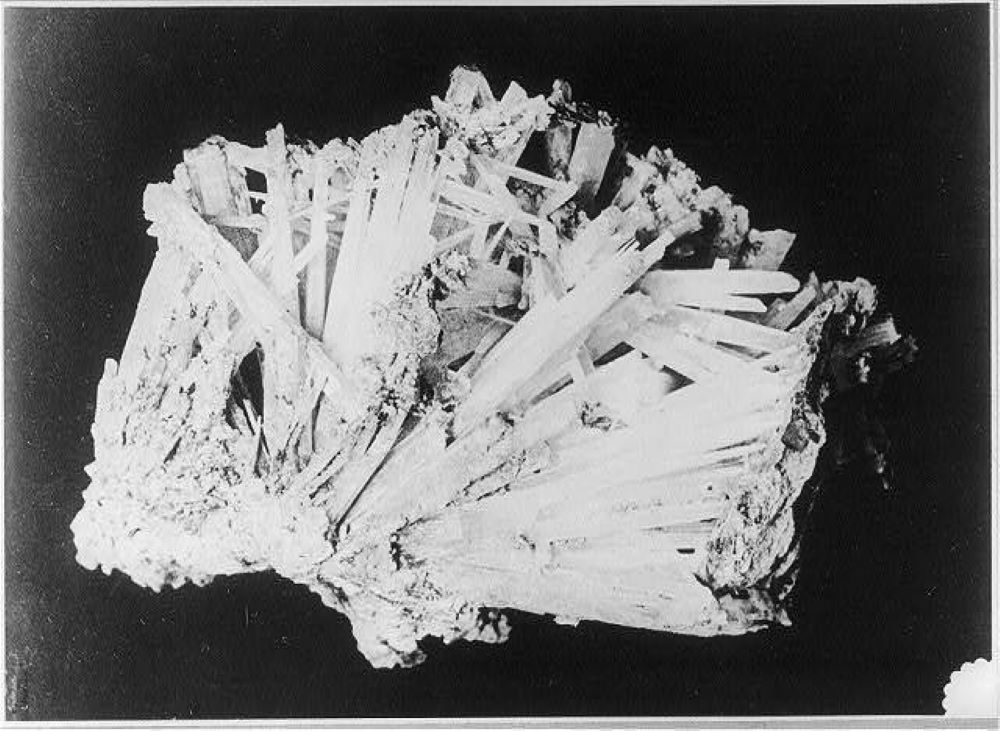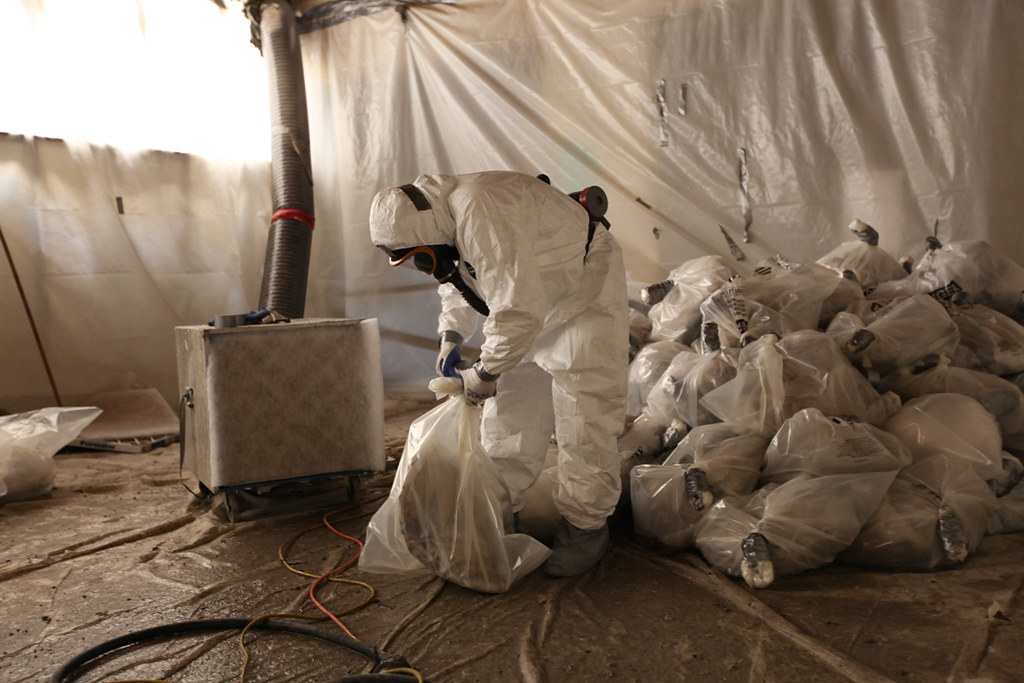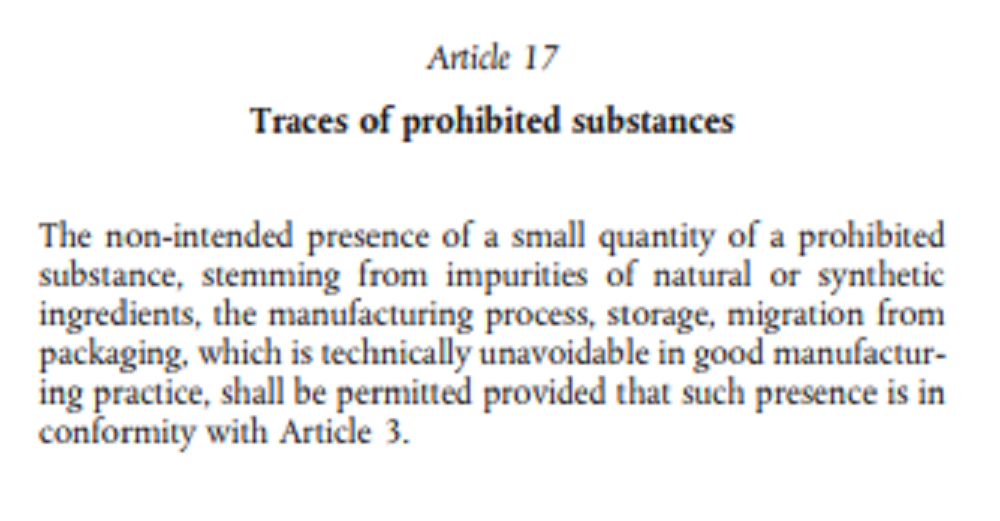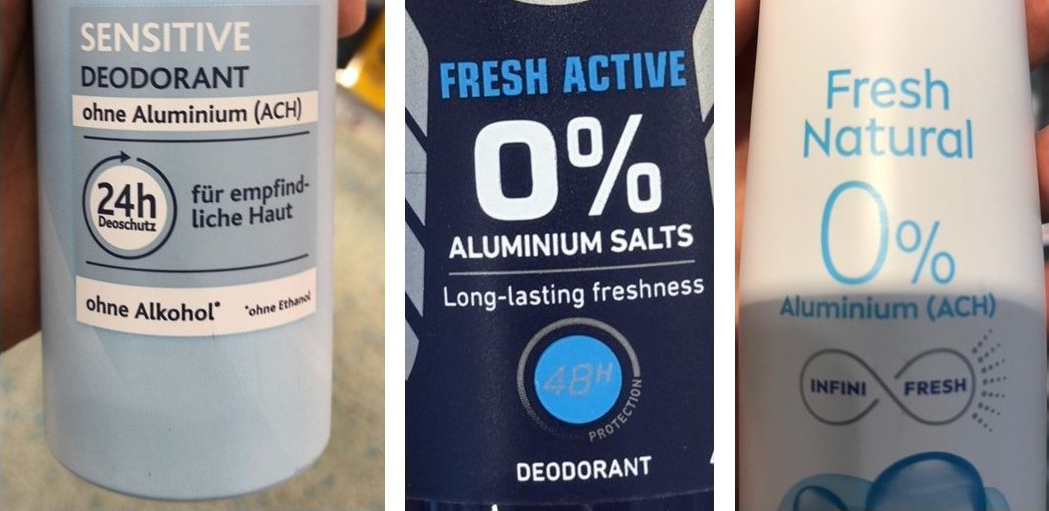
Picture source: Library of Congress CC BY 2.0
I guess not much introduction needs to be made here, asbestos and heavy metals are a big NO-NO. Just remember how much fuss was made about removing asbestos from our houses! Some of you have maybe even experienced a group of workers in special suits trying to remove it very carefully from our roofs and walls.
I guess we would not expect to have them in something we are directly putting on our skin?!
Let us go back and look at a court case from 2018, where Johnson & Johnson (J&J) was accused of selling baby powder that contained asbestos. The company was sued by 22 women who claimed that they developed ovarian cancer after using their talc-based baby powder.
J&J insisted that their product is safe, however, due to an examination of their internal documents done by Reuters (a news agency), it has been revealed that J&J was aware that their products are contaminated with asbestos and kept the information from the public. So there it goes, we can’t even trust beauty brands for kids!
Even though the company was sued on this matter several times, the evidence in this case was finally conclusive and the company was ordered to pay $4.69 billion in compensation to the affected women [1]. Here is to hoping J&J and other beauty companies have learned from this.

Picture source: NAVFAC CC BY 2.0
In the EU, asbestos and heavy metals like mercury and lead are banned in cosmetics.
There are laws but these are not always met. Traces of asbestos can find their way in our cosmetics through talcum powder (as we have seen from the court case) – Talc is added to cosmetics to create a silky feel and absorb moisture.
These are a few examples of cosmetics that may contain talc: lipstick, mascara, face powder, blush, eye shadow, foundation and even children play-make-up. This means that even if heavy metals or asbestos are banned from cosmetics, small traces of these harmful substances can be found in them and unfortunately these “small traces” are not regulated, as stated in CE 1223/2009 Regulation, Article 17. I guess we just can’t win can we?

CE 1223/2009 Regulation, Article 17
For example, a recent research in the German and Spanish market, was looking at levels of heavy metals in kajal-based eye cosmetics. Heavy metals, such as lead and arsenic, were found in more than half of the products tested [2].
Another metal that has a story on its own and is definitely worth mentioning is Aluminum. Some of you may even remember the big media ‘scandal’ about aluminum and the following “free from aluminum” label shining at us from all over the beauty care store.
If you see such a label on a deodorant, remember that this is just a marketing strategy, as deodorants didn’t contain aluminum in the first place. Mind blown? So am I. Aluminum salts are used only in antiperspirants because they function as pore blockers- simply said, they block the sweat pores and do not allow any sweat to come out.
In many articles on the internet, we are warned about aluminum because it may cause breast cancer. This has, however, never been directly proven by scientific research.

Picture source: Bara Halikova
During a study done in 2017, it was concluded that persistent use of underarm cosmetic products may be correlated to absorbed concentration of aluminum in breast tissue, however the causation to breast cancer was not proven.
The authors, nonetheless, recommend that young women should take caution when using underarm cosmetic products and should try to stay away from their excessive and frequent use due to the possibly increased risk of breast cancer [3].
Another reason why to stay cautious is the neurotoxicity of aluminum. Aluminum and its salts can cause damage to our nervous system.
While the neurotoxicity of aluminum has been shown in human tissue and cells, it is still very difficult to understand how this neurotoxin affects human health. There is a growing concern that accumulation of aluminum in the brain leads to diseases such as Alzheimer’s disease [4].
Fact Sheet Asbestos:
What is it
- Naturally occurring fibrous silicate mineral, started to be largely used at the end of the 19th century.
Where can we find it
- Asbestos is an excellent electrical insulator and is highly fire-resistant.
- Was very commonly used as a building material.
- In cosmetics, asbestos can be found in products using Talcum powder. When talc is mined it may contain traces of asbestos.
- Talc is often added to make-up powder, eye shadows, blushes, foundations and creams.
Health effect
- Inhalation of asbestos fibers can lead to various dangerous lung conditions, including cancer of the lining of the lungs, asbestosis, or cancer of the lining of other organs. It can also cause ovarian cancer.
Effect environment
- Asbestos can contaminate air, water and soil where it then can be toxic to humans.
Fact Sheet Heavy Metals:
What is it
- Metallic chemical elements with relatively high density such as mercury, cadmium, arsenic, chromium, thallium, lead and aluminum.
Where can we find it
- Heavy metals normally occur in nature.
- They often get into cosmetic products, like lipstick and eye shadows, as contaminants, meaning they were not intentionally added. Some, as aluminum are added intentionally, for example to antiperspirants.
Health effect
- High exposure to heavy metals can cause heavy metal poisoning.
- Exposure can also be carcinogenic and toxic to certain organs of the human body, causing nephrotoxicity, neurotoxicity, hepatotoxicity, skin toxicity, and cardiovascular toxicity.
Effect environment
- Most heavy metals cause environmental and atmospheric pollution.
- Equally toxic to terrestrial and aquatic organisms as to humans.
GS tip: I highly advise not to buy make-up for children, avoid buying make-up or play make-up at markets or ordering from cheap e-shops. If you do buy play make-up, make sure the cosmetics went through proper control and testing and it’s suitable for children, check ingredients for Talc and make sure it does not contain any. Try to minimize the use of antiperspirant, only for really necessary occasions, definitely not daily.
Sources
[1] https://www.reuters.com/investigates/special-report/johnsonandjohnson-cancer/
[2] https://www.mdpi.com/1660-4601/18/11/6109
[3] https://www.thelancet.com/article/S2352-3964(17)30233-5/fulltext
[4] https://www.tandfonline.com/doi/full/10.1586/14737175.2014.915745
Fact sheet sources
https://en.wikipedia.org/wiki/Asbestos
https://www.asbestos.com/products/makeup/
https://www.sciencedirect.com/science/article/pii/S1018364722000465


0 Comments